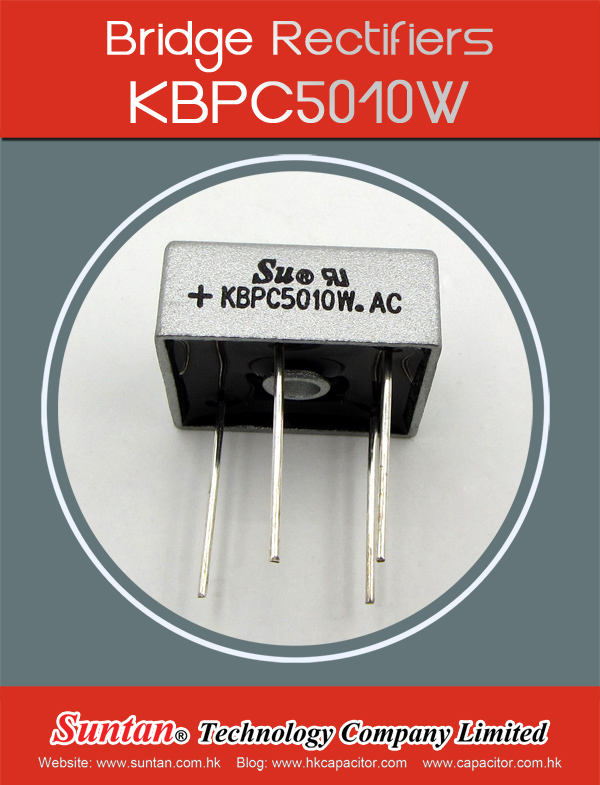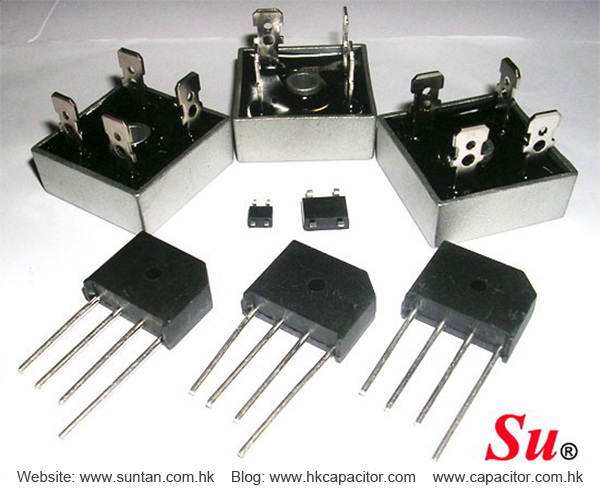Suntan Tells You A Bridge Rectifier Working Principle
Suntan Technology Company Limited
----All Kinds of Capacitors
The half-wave rectifier and the full-wave rectifier are the most common rectification systems.
The half-wave rectifier uses a single diode to simply remove half of the sinusoidal wave. It produces a directional output with a pulsating nature. Positive AC voltage on the cathode side of the diode is allowed to pass through. When the AC reverses, the negative input is not allowed to pass through.
The half-wave rectifier has limited uses since it is inefficient and provides only half the potential voltage. It is used in applications such as a dimmer switch on a light, reducing the voltage to half to produce the dimming effect.
The full-wave rectifier is used in situations where both the positive and negative input is required. A full-wave rectifier uses two diodes to convert the entire wave of AC input into a constant positive voltage. The resulting DC voltage pulsates at twice the frequency of the AC input. A filter is often used to smooth the DC output. A variation of the full-wave rectifier uses four diodes in a bridge, called a full-wave bridge rectifier, in situations where higher power output is required.


